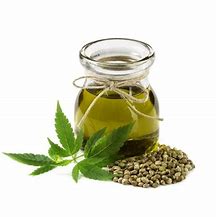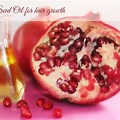Sunflower Oil - 2






Sunflower Oil - 2
The 'high oleic' sunflower oil has the approximate composition:
| saturated | 10% |
| monounsaturated | 80% |
| poluunsaturated | 10% |
Physical Properties
| Odour | Essentially odourless |
| Acid value | 0.4 max |
| Specific gravity | 0.915-0.920 |
| Energy value Kcal/100 ml | 900 |
Vitamins
The oil contains vitamins A, D and (principally) E, and minerals calcium, zinc, potassium, iron, phosphorus.
Folk-lore and Traditional Plant uses
The oil was used by the indigenous population of America to help with rheumatism, whereas in Russia the leaves and flowers were used for the treatment of chest problems, bronchitis, cought's and even malaria. The dried leaves have been smoked like tobacco.
The petals can be steeped in water to produce a yellow hair dye and the stalks are used for papermaking. The oil burns well and may be used in oil lamps. It has also been used in the manufacture of resins and soap. Sunflower seeds together with a decoction of morning glory (Ipomoea pandurata) are used as a sacrament by the Iroquois Indians in spring and autumn rituals (Chevallier 1996).
Therapeutic Properties - Internal Use
Sunflower oil has light diuretic properties and also favours the development of healthy teeth in growing children. It aids cholesterol metabolism (Bartram 1996) and may be used to counter act arteriosclerosis(Stier 1990). Sunflower oil is expectorant and, as it contains inulin, it is useful in the treatment of asthma (Mabey 1988 p. 14). It has been reported as being helpful in the treatment of multiple sclerosis (Anon 1990), Millar et al 1973, Swank & Dugan 1990). A homoeopathic sunflower tincture is used in cases of constipation.
Oleic type sunflower oil is included in mixtures designed to balance the lipidic diet (Bruneton 1995): the current recommendations are 25%/50%/25% of saturated, monounsaturated and polyunsaturated oils respectively.
Therapeutic Properties - external Use
Beneficial for skin complaints and bruises
Alleged to be helpful in cases of leg ulcers
Included in preparations for skin disorders, haemorrhoids, acne, seborrhoea, rhinitis, and sinusitis (Reynolds 1993)
Cosmetic Use
The oil has a softening and moisturizing effect on the skin (Mabey 1988) and is used for massage.
Culinary Use
It is a good cooking oil and is used in frying and to make margarine, cheese and salad dressings . Mixing the seeds with water in a blender produces a very palatable vegetarian milk, The seeds can be roasted and eaten or ground for use as a coffee substitute. The flower buds can be cooked and eaten with butter just like artichokes. As the smoke point is below 220C the oil is suitable for low temperature cooking.
Cautionary Notes
The oil used in blended cooking oils has been highly refined and should not be used for aromatherapy massage. The unrefined oil should not be used at high temperatures as it breaks down and produces toxic elements when heated (Earle 1991). Otherwise, there are no other known contraindications (Winter 1984).
Reference: carrier Oils For Aromatherapy & Massage: Len Price with Ian Smith & Shirley Price
Articles-Most Read
- Home
- Contact Us
- Coconut Oil-2
- Absorption Ratings for Carrier Oils
- Cold Pressing Method
- What are Essential Fatty Acids
- Cherry Kernel Oil
- Fixed Oils and Skin Penetration
- Hempseed Oil
- Almond Oil
- Cocoa butter
- Camelina Oil
- Antibacterial Effects Of Carrier Oil
- Coconut Oil
- Lime Blossom Oil (macerated)
- Carrot Oil, Wild Carrot Oil (macerated)
- Apricot Kernel Oil
- Kukui Nut Oil
- Jojoba Wax
- Pumkin Seed Oil - Cucurbita maxima, C. pepo
- Passion Flower OIl (Macerated)
- Hydrocotyle Oil (macerated)
- Palm Kernel Oil
- Rapeseed Oil - Carrier Oil
- Nutrients
Who's On Line
We have 144 guests and no members online
Articles-Latest
- How to Make Homemade Olive Oil: A Step-by-Step Guide
- 20 Evidence-Based Aloe Vera Oil Benefits For Skin, Hair & Health
- Peanut oil - Cold pressed - Are There Health Benefits? How To Make
- What Are the Health Benefits of Black Seed Oil?
- Comfrey oil Infused
- Chamomile Flowers Infused Oil
- Calendula Flowers Infused Oil
- Arnica Flowers Infused Oil
- How To Make Herb-Infused Oils
- DIY avocado oil for healthy skin
- How To Make Coconut Oil
- 8 Benefits of Mustard Oil, Plus How to Use It
- SHOREA STENOPTERA SEED BUTTER
- Shea Butter- 7 Amazing Benefits Of Shea Butter
- Monoi Oil For Hair & Skin
- Mango Seed Oil
- Cohune Oil Is The Next Big Thing
- Brazil Nut OIl
- 7 Impressive Benefits Of Allspice
- Camelina Oil Benefits, Uses, and Side Effects




